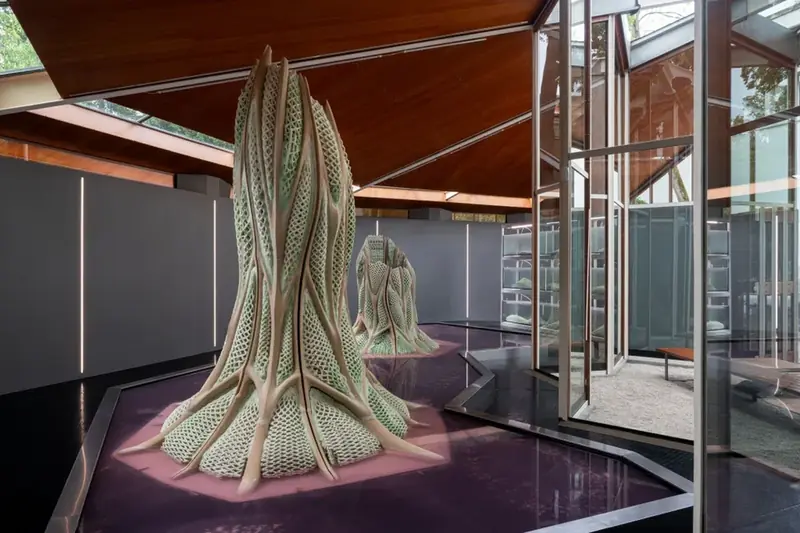
A team of materials scientists from the Swiss Federal Institute of Technology (ETH) in Zurich has developed a new “living” material that incorporates cyanobacteria and absorbs carbon dioxide (CO2). Over time, it hardens and can be used in construction.
Thanks to the cyanobacteria, this new material is photosynthetic. This means it can chemically convert carbon dioxide, sunlight, and water into oxygen and sugars that promote growth.
With the right nutrients, the material can also transform CO2 into solid carbonate minerals, such as limestone, the researchers stated. Eventually, these minerals create a robust framework within the material, strengthening it and storing carbon in a more stable form than through photosynthesis.
“The material can store carbon not only in biomass but also in the form of minerals (a unique property of these cyanobacteria). As a building material, it will help in the future to sequester CO2 directly in buildings,” said co-author Mark Tibbitt, an assistant professor in the Department of Macromolecular Engineering at ETH.
Without the ability to isolate carbon in mineral form, the new material would remain flexible and jelly-like, Live Science reported. However, by producing a mineral skeleton from CO2 and nutrients, the material gradually increases its own mechanical strength, making it a strong candidate for construction, the researchers claim.
They also believe that in the future, the material could be used as a coating on building facades to directly absorb CO2 from the atmosphere. During the study, the material continuously absorbed carbon dioxide for 400 consecutive days, retaining about 26 milligrams of CO2 per gram of material in the form of carbonate deposits. This rate is highly efficient and significantly higher than other forms of biological carbon absorption, scientists say.
The increasingly vibrant green color of the material indicates that it is storing CO2 in the form of biomass. However, cyanobacteria can only grow to a certain extent, and meanwhile, the rate at which carbon was stored within the bacterial cells leveled off after about 30 days. This means that carbon sequestration in the form of biomass decreases after this period, but does not stop.
The foundation of the new material is a 3D-printed hydrogel with a high water content, made up of cross-linked molecules. The researchers chose a porous hydrogel and cultivated cyanobacteria within it, ensuring adequate light, water, and CO2 penetration. The team then tested various forms of the hydrogel to determine the best one for the survival of the cyanobacteria.

“Cyanobacteria are one of the oldest forms of life on Earth. They are highly efficient at photosynthesis and can utilize even the faintest light to produce biomass from CO2 and water,” noted co-author Ifan Tsui.
During the study, the scientists immersed the hydrogels in artificial seawater to provide the necessary nutrients for mineral deposition. Now, the inventors require further research to determine how these nutrients, particularly calcium and magnesium, can be incorporated into the material that will cover buildings.
Meanwhile, the researchers are experimenting with different shapes that the “living” material could take. At an architectural exhibition in Venice, the team presented it in the form of two objects resembling tree trunks. Each could absorb about 18 kilograms of CO2 per year—equivalent to what a 20-year-old pine tree would absorb.
The scientists noted that cyanobacteria could be genetically modified to increase their photosynthesis rate before being embedded in the material.
The results of the study were published in the journal Nature Communications.
